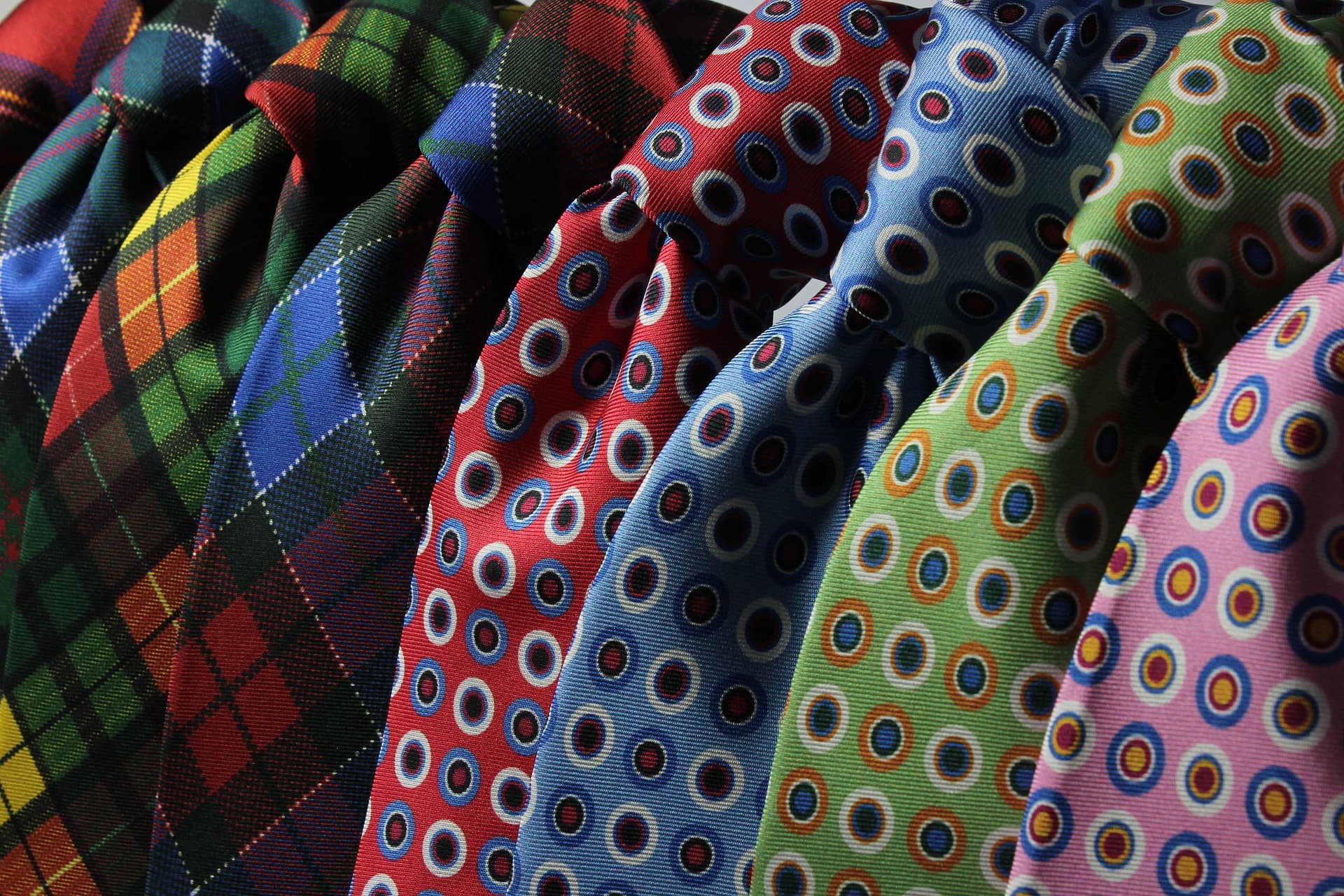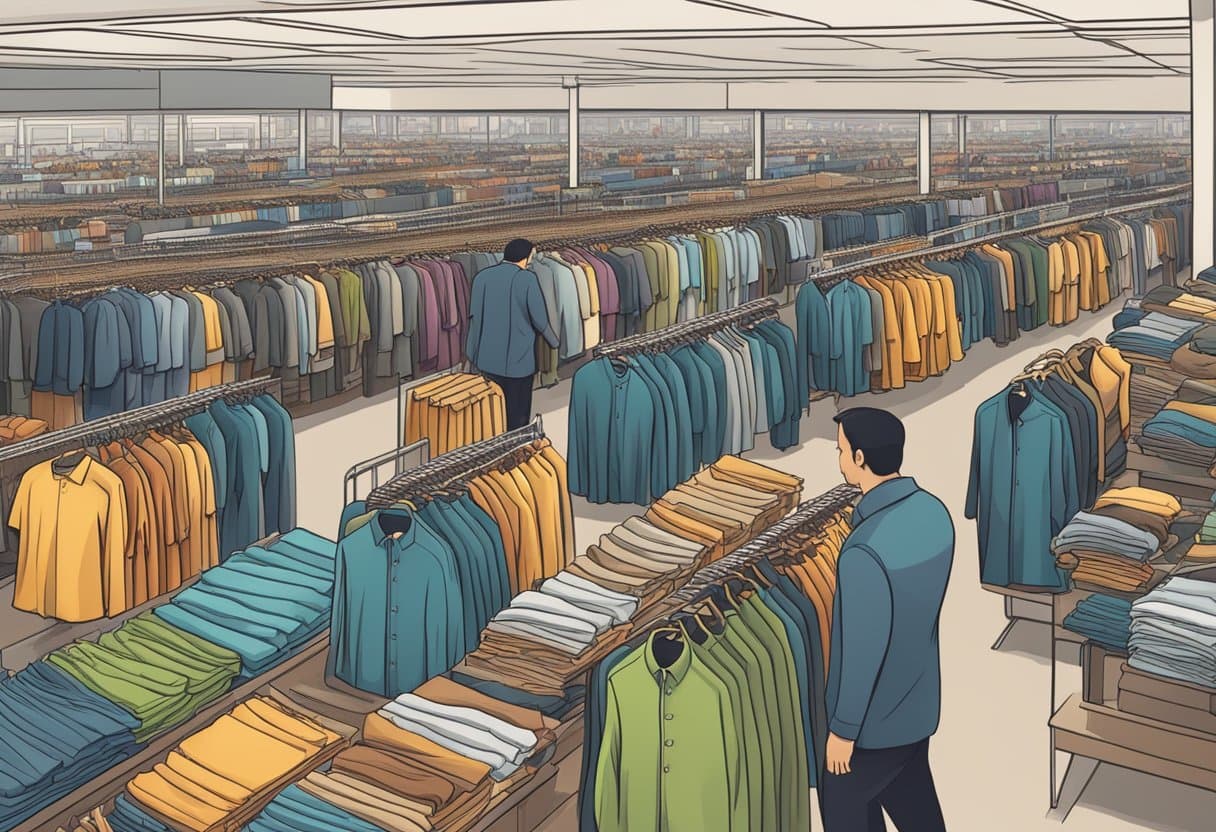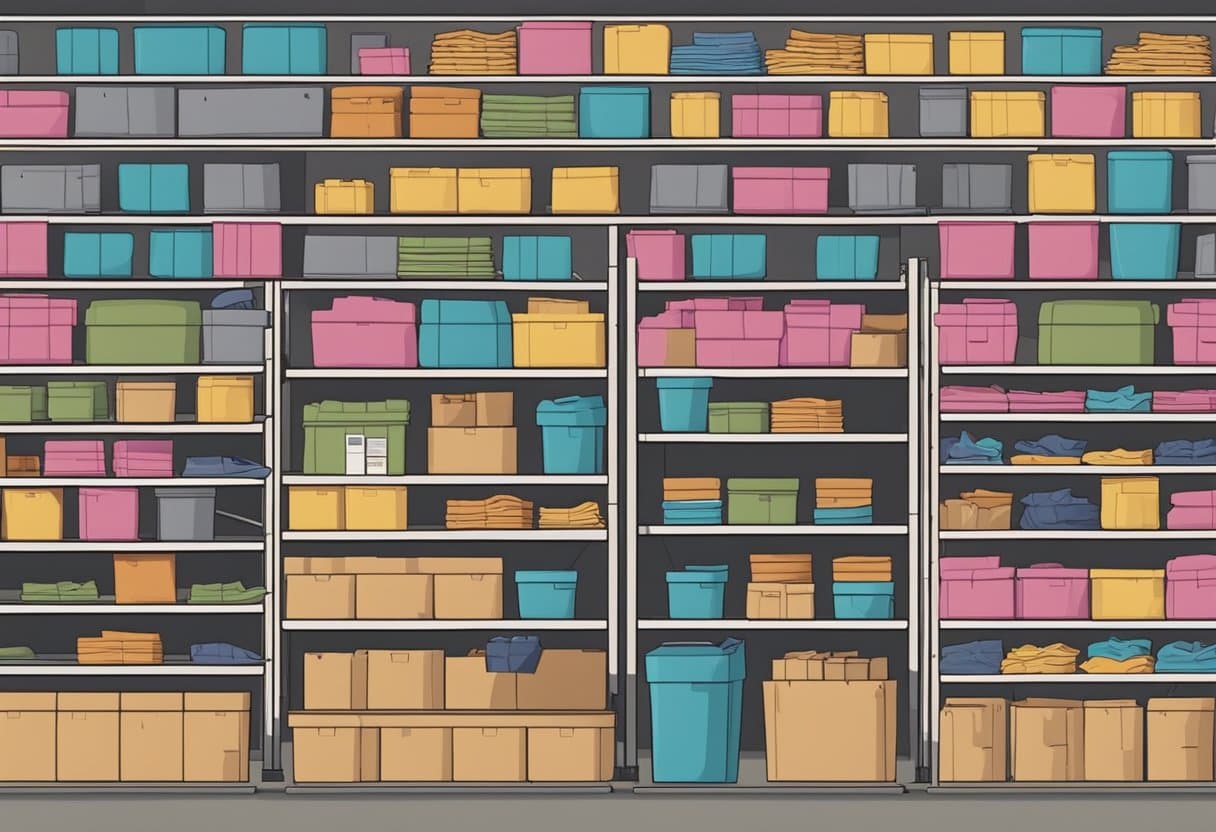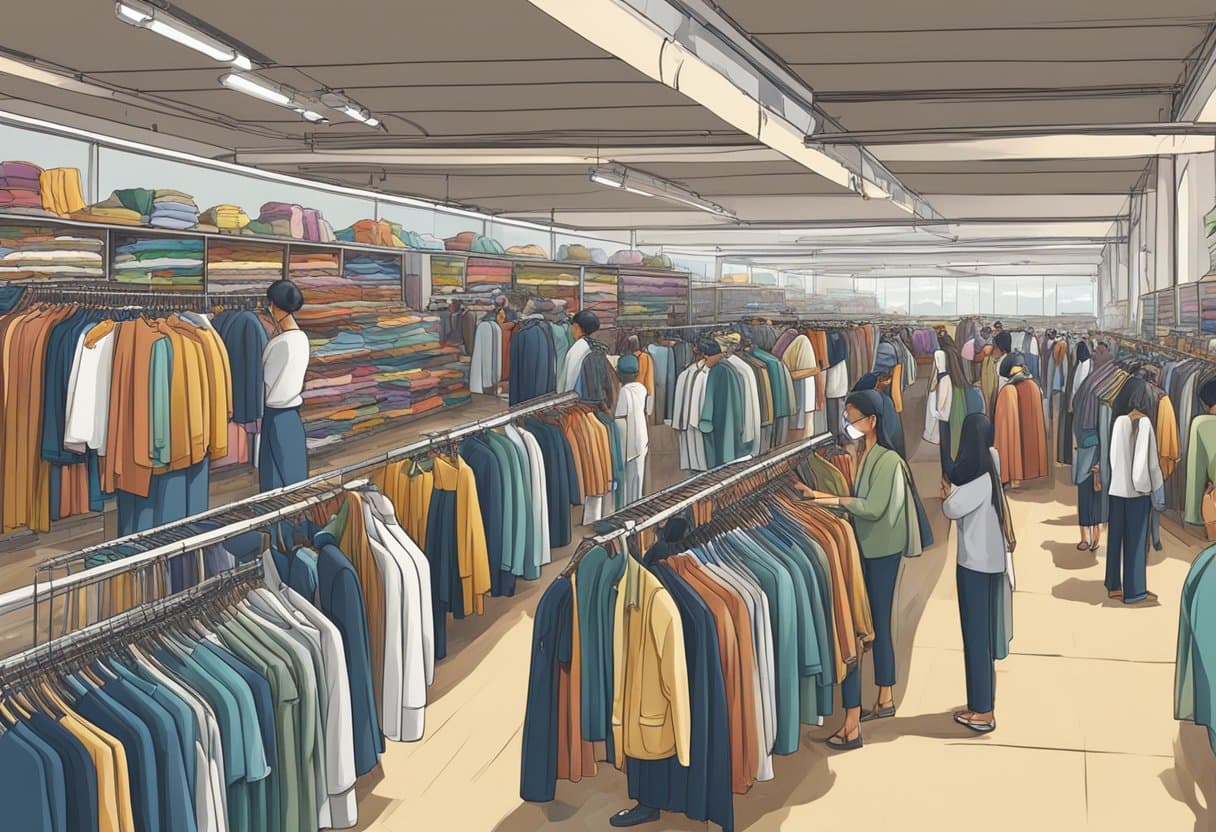Where to Buy Clothes in Bulk for Resale: Top Wholesale Suppliers and Tips

Knowing where to buy clothes in bulk for resale can be a profitable business strategy for many retailers and entrepreneurs. Sourcing high-quality clothing at wholesale prices allows sellers to maximize their profits while offering customers desirable products at competitive rates. To succeed in this venture, it is essential to know where to find the best deals on bulk clothing while also maintaining a keen eye for quality and style.

One effective approach for procuring bulk clothing is to explore online platforms that cater specifically to wholesale clothing needs. These platforms often offer a wide variety of products, ranging from clothing for men, women, and children, to accessories and household items. By leveraging the global reach of the internet, sellers can access numerous suppliers, compare prices, and select items that align best with their customer base and company vision.
However, it is crucial to keep in mind that not all wholesale providers offer the same level of quality and service. Conducting thorough research, reading reviews, and reaching out to other sellers can provide valuable insights into the credibility and reliability of potential suppliers. Establishing trustworthy partnerships with reputable suppliers will ultimately lead to a more successful and sustainable clothing resale business.
Understanding the Wholesale Clothing Market
Defining Wholesale and Its Benefits
Wholesale clothing refers to the practice of buying large quantities of apparel from manufacturers or distributors to secure a lower price per unit. Retailers and resellers can benefit from purchasing wholesale clothing due to larger profit margins and the ability to offer competitive prices to their customers. Some key benefits of buying clothes in bulk for resale include:
- Cost savings: By purchasing large quantities, you can often negotiate better per-unit prices with suppliers, ultimately increasing your profit margin when reselling the items.
- Consistent inventory: Sourcing wholesale clothing allows for a more consistent inventory, making it easier to manage stock levels and meet customer demands.
- Easier logistics: Ordering in bulk means fewer transactions and more streamlined logistics processes.
The Importance of Quality in Bulk Clothing
When purchasing wholesale clothing for resale, it is crucial to prioritize quality alongside cost. High-quality products will not only enhance the reputation of your business but also lead to higher customer satisfaction and repeat business. Consider the following aspects when evaluating the quality of bulk clothing:
- Material: Choose clothes made from durable, comfortable, and easy-to-maintain materials, such as cotton, polyester, and rayon.
- Construction: Examine the stitching and seam quality to ensure the apparel is well-constructed and able to withstand regular wear and laundering.
- Fashion: Select clothing that is on-trend or versatile in style, maximizing the potential for customers to purchase and appreciate the items.
In the competitive world of retailing, understanding the wholesale market and sourcing quality clothing can make all the difference in achieving success. Prioritizing both cost and quality will help create a retail business that is sustainable, profitable, and well-regarded by customers.
Starting Your Resale Clothing Business

Creating a Business Plan
Before diving into the world of resale clothing, it's important to develop a solid business plan. A well-structured plan will provide direction and help you make informed decisions on issues such as inventory sources, pricing strategy, and target market. It also helps identify potential startup costs, including purchasing bulk clothing, marketing expenses, and other operational expenditures. Including a section on competitor analysis will enable you to understand your competition in the resale market and facilitate carving a niche for yourself. When drafting the business plan, focus on creating a clear and concise roadmap for your venture.
Legal Aspects: Licenses and Permits
To operate a resale clothing business legally, you'll need to have the necessary licenses and permits. Begin by applying for a business license from your local government to officially establish your company. It's also recommended to obtain business insurance to protect your assets and manage risks. Besides the business license, you'll need a tax license or sales permit depending on your location. For taxation purposes, apply for a Federal Tax ID or EIN, which acts as your unique identifier in the eyes of the Internal Revenue Service. Research any additional permits and licenses specific to your jurisdiction; staying compliant is crucial for sustainable business operations.
Finding Your Niche in the Resale Market
In a crowded resale clothing market, establishing a niche is paramount for success. Start by assessing the demand in your area, and identify the categories of clothing that have a considerable customer base. Common niches include budget-friendly attire, designer clothes, vintage styles, and children's clothing. Focus on a specific niche to differentiate your business and set yourself apart from competitors.
Knowing your niche will also guide you in finding appropriate sources to buy clothes in bulk for resale. For example, if you're focusing on designer clothing, you may want to partner with wholesalers or even attend designer brand clearance sales. A clear niche will not only help attract a dedicated customer base but also allow you to streamline your inventory procurement process.
Sourcing Wholesale Clothing for Your Store
Identifying Reliable Wholesale Suppliers
When looking for wholesale clothing suppliers for your store, it is crucial to identify reliable ones that offer quality products at competitive prices. Start by researching online for some popular wholesale supplier platforms such as Suglarips, Wholesale7, and Chinabrands. Check customer reviews and testimonials to gauge their reputation in the market.
Another way to find reliable wholesale suppliers is through referrals from those in the clothing industry, such as fellow retailers, designers, and manufacturers. They can often provide valuable recommendations based on personal experience.
Evaluating Clothing Quality and Variety
When sourcing wholesale clothing for your store, pay close attention to the quality of the garments and the variety of styles and designs offered. It's essential to select suppliers who provide high-quality products since your customers will expect the best.
Examine the fabrics used, the stitching, and the finishing touches of the garments. Also, take note of the brands and designers they carry. It's crucial to establish a good mix of well-known brands along with unique and upcoming designers to offer a diverse inventory to your customers.
Here are some aspects to consider when evaluating clothing quality and variety:
- Materials: natural fibres, synthetic materials, or a combination
- Construction: seams, stitching, and overall garment structure
- Brands: established brands, emerging designers, or private-label products
- Styles: classic, trendy, contemporary, or niche-focused fashion
Attending Trade Shows for Connections
Another effective method for sourcing wholesale clothing and building relationships with suppliers is by attending trade shows. These events provide an opportunity to meet suppliers, manufacturers, and fellow retailers in person. Furthermore, it enables you to examine the products firsthand, assess their quality, and negotiate prices and terms directly with suppliers.
Make sure to plan your visit, identify specific exhibitors you want to meet and prepare relevant questions for them. Attending trade shows helps improve your chances of securing exclusive deals and establishing long-lasting connections in the wholesale clothing industry.
Remember to follow these guidelines when attending trade shows:
- Research and identify relevant trade shows in your niche.
- Make a schedule of events to attend, and prioritize key exhibitors.
- Prepare a list of questions for potential suppliers.
- Bring your business cards to help establish a professional presence.
- Network with other attendees to gain valuable insights and make new connections.
By following these steps in sourcing wholesale clothing for your store, you'll be well-equipped to build a successful and competitive inventory for your customers.
Curating Your Bulk Clothing Inventory

Selecting a Range of Sizes and Styles
When curating your bulk clothing inventory for resale, it is essential to have a diverse selection of sizes and styles to cater to various customer preferences. Include clothing options for kids, men, women, and babies. Offer a range of brands to provide variety and cater to different budgets and tastes, from affordable t-shirts and sweatshirts to high-quality jackets and polos.
- Sizes: Offer clothing in various sizes, from extra small to plus sizes.
- Styles: Curate a mix of styles, from casual and athletic wear to formal and everyday attire.
- Brands: Offer a range of quality brands and price points, from budget-friendly to designer labels.
Be mindful of current fashion trends and customer preferences to ensure a well-rounded and appealing inventory.
Considering the Seasonality of Apparel
In addition to sizes and styles, it is crucial to consider the seasonality of apparel when curating your bulk clothing inventory. Offer clothing items that are appropriate for the current season and upcoming seasonal shifts, like lighter clothing such as t-shirts and polos during warmer months and warmer apparel like jackets and sweatshirts for colder seasons. Don't forget to include a variety of hats suitable for different weather conditions!
A possible organization for your seasonal inventory can look like this:
Season | Apparel |
Spring | T-shirts, polos, light jackets |
Summer | T-shirts, tank tops, shorts |
Fall | Sweatshirts, long sleeves, hats |
Winter | Jackets, sweaters, hats |
By curating your inventory according to sizes, styles, and seasonality, you can ensure your customers will find exactly what they're looking for, making for a successful resale business.
Logistics of Bulk Clothing Purchases
Managing Shipping and Delivery Times
When purchasing clothes in bulk for resale, it is crucial to be mindful of the shipping and delivery times involved with your orders. Typically, bulk orders entail longer lead times as compared to individual or smaller orders. Suppliers may offer different shipping options with varying costs and delivery times. It is crucial to balance delivery speed and cost to stay competitive while maintaining a healthy profit margin.
Some considerations for managing shipping and delivery times include:
- Negotiating shipping rates: Establish relationships with shipping carriers to leverage discounted rates for bulk shipments.
- Tracking orders: Implement a system to keep track of the status of each order, improve customer service, and update customers on delivery times.
- Import regulations and customs: Be aware of import regulations and customs duties for clothing imports to avoid delays and additional costs.
Handling Storage and Inventory Management
Storing and managing bulk clothing inventory effectively is essential for maintaining product quality and ensuring customer satisfaction. Various factors play a crucial role in efficient storage and inventory management:
- Warehouse organization: Organize the clothing inventory systematically in warehouse storage areas to ensure smooth retrieval and shipping processes.
- Inventory control: Implement an inventory management system to monitor stock levels, track the movement of goods, and prevent overstocking or stock-outs.
- Optimal storage conditions: Maintain a clean, well-ventilated, and pest-free warehouse with adequate temperature and humidity control to protect clothing items from damage.
- Returns management: Have a well-defined process in place for handling returns, including inspections, inventory updates, and reverse logistics, to minimize disruption to the warehouse operations.
By effectively managing shipping and delivery times, and handling storage and inventory management, bulk clothing resellers can streamline their logistics operations, minimize costs, and ultimately increase business growth and customer satisfaction.
Customizing and Branding in Wholesale Apparel

Options for Customizing Clothing
When looking to buy clothes in bulk for resale, there are several options for customizing clothing to create a unique product. Some popular methods include screen printing, embroidery, and heat transfer.
- Screen printing: This method involves applying ink to the apparel using a screen, and it is best suited for designs with limited colours and complex logos. It is a popular choice for customizing t-shirts and other apparel in bulk due to its cost-effectiveness and durability.
- Embroidery: With this technique, a design is stitched directly onto the apparel using an embroidering machine. This method is particularly popular for adding logos and embellishments to higher-end garments such as polos and jackets.
- Heat transfer: This process uses heat and pressure to transfer a design from a special type of paper onto the fabric. It is an excellent option for full-colour images and intricate designs but may not be as durable as screen printing or embroidery.
All of these methods are commonly used by clothing print shops and embroiderers to customize blank apparel.
Finding Suppliers for Blank Apparel
When purchasing t-shirts and other clothing items in bulk for customization and resale, it is crucial to find reliable suppliers that offer high-quality blank apparel. Some factors to consider when choosing a supplier include the variety of available styles, sizes, colours, and the quality of the materials used. Here are some tips for finding suitable suppliers:
- Search online: Explore industry-specific websites, social media, and forums related to wholesale apparel. They often contain useful information about reputable suppliers.
- Trade shows and expos: Attend industry events and exhibitions to connect with wholesalers and network with other businesses in the apparel industry.
- Request samples: Before committing to a large bulk order, consider requesting samples of the blank apparel to evaluate the fabric quality and check for any defects.
- Read reviews and testimonials: Check for customer reviews and feedback on the supplier's website or online forums to ensure they have a positive reputation.
By carefully considering all of these factors, you can find a reliable supplier of t-shirts and other blank apparel suitable for your customizing needs.
Marketing Your Clothing Resale Business

Building an Online Presence
Creating a strong online presence is crucial for the success of your clothing resale business. By establishing a user-friendly website or an e-commerce platform, you can efficiently showcase your inventory and target potential customers. It is essential to include high-quality images and detailed descriptions of your products to make it easier for customers to make informed decisions.
Invest in a well-designed, easy-to-navigate online store that reflects your brand's identity and offers a seamless shopping experience. Integrating your store with social media platforms helps you to reach a wider audience and engage with your customers.
In addition to utilizing social media channels, utilize Search Engine Optimization (SEO) and other digital marketing tactics to increase your website's visibility within search engine results. This will help attract more customers and boost your sales.
Leveraging Customer Reviews and Feedback
Customer reviews and feedback are invaluable for improving your clothing resale business and building a strong reputation in the market. Encourage customers to leave third-party reviews on the quality of your products and services. Positive reviews on platforms like Google, Yelp, or social media can significantly help in building consumer trust and enhancing your online presence.
Furthermore, actively engaging with customers and showing gratitude for their feedback, be it positive or negative, creates a sense of loyalty and a positive reputation. Addressing customer concerns and issues promptly demonstrates your dedication to providing excellent customer service.
Analyze feedback from your customers to identify patterns and potential areas of improvement. Continuously optimizing your online store and inventory based on customers' preferences will result in a better shopping experience and higher customer satisfaction. Keep in mind that happy, satisfied customers are more likely to refer your business to their friends and family, increasing your customer base and sales.
Maintaining Ethical Practices

Ensuring Ethical Sourcing and Sales
When buying clothes in bulk for resale, it's crucial to prioritize ethical practices in the sourcing and sales process. This involves working with manufacturers and suppliers that adhere to fair labour standards, maintain safe working conditions, and provide adequate wages to their employees. One way to ensure ethical sourcing is by considering suppliers certified by organizations like Fair Trade, which enforce strict ethical guidelines throughout the supply chain.
In addition to focusing on fair labour in the supply chain, ethical sales practices are essential in building trust with customers and establishing a reputable brand. This includes being transparent about the production process and origins of your products, carefully considering the materials used, and ensuring timely and fair payment to your suppliers.
Contributing to Environmental Sustainability
Sustainability is another important aspect to consider when buying clothes in bulk for resale. Prioritizing eco-friendly materials and production methods not only reduces the negative impact on the environment but also attracts environmentally-conscious customers who value sustainability.
Some ways to contribute to environmental sustainability include:
- Opting for sustainable materials like organic cotton, Tencel, and recycled fibres, which have a lower environmental impact compared to synthetic materials and conventional cotton.
- Implementing energy-efficient practices in your production and business operations, such as using renewable energy sources, reducing waste, and optimizing transportation methods to minimize carbon emissions.
- Supporting closed-loop systems in which clothing items are recycled, upcycled, or refurbished, thereby extending their lifespan and reducing the high rate of textile waste in the fashion industry.
To ensure ethical fashion and contribute towards environmental sustainability, explore suppliers that have environment-friendly practices and participate in circularity in clothing resale. By maintaining ethical practices in both sourcing and sales and promoting environmentally conscious choices, your business will contribute to the growing movement of sustainable and ethical fashion retail.
Frequently Asked Questions
What are the best online platforms for purchasing wholesale clothing for resale?
There are several online platforms for purchasing wholesale clothing for resale. Among the most popular and reputable ones are Alibaba, DHgate, and Wholesale Central. These platforms offer a wide range of clothing items, price points, and suppliers, making it easier for businesses to choose the best options for their specific needs and target markets.
How can I find reputable wholesale clothing suppliers in Canada?
To find reputable wholesale clothing suppliers in Canada, it is recommended to start by conducting thorough research. Networking with other businesses and attending trade shows are also effective ways to find credible suppliers. Additionally, online directories such as the Canadian Apparel Federation's supplier directory can be useful resources for businesses searching for legitimate and reliable Canadian wholesale suppliers.
What should I look for when choosing a bulk clothing vendor for my resale business?
When choosing a bulk clothing vendor for your resale business, several factors should be considered. These include the supplier's reputation, product quality, price, minimum order quantity, shipping cost, and payment terms. It is essential to communicate with suppliers to understand their policies and ensure that they meet your requirements.
Are there any strategies for sourcing high-quality, yet cheap, clothing in bulk?
Sourcing high-quality, yet cheap, clothing in bulk requires diligence and research. Strategies for finding affordable wholesale clothing options include looking for suppliers with discounted overstock items or factory seconds, negotiating pricing with vendors, and comparing offerings from different suppliers. It may also be helpful to consider partnering with other businesses to share shipping costs or place larger orders to negotiate discounts.
What are the legal requirements for rebranding wholesale clothing with my labels?
Rebranding wholesale clothing with your labels involves adhering to specific legal requirements. These requirements may vary depending on the country and region. Generally, businesses need to ensure that clothing labels include accurate and complete information, such as fabric content, care instructions, and country of origin. It is essential to consult with local authorities or legal advisors to ensure compliance with relevant regulations when rebranding clothing.
How do small boutiques typically source their inventory for resale?
Small boutiques often source their inventory for resale through a mix of strategies, including attending trade shows, working with local designers, and partnering with wholesale suppliers. These businesses may also network with other boutiques and businesses to share resources and uncover new suppliers to maintain a unique and diverse inventory that appeals to their target customers.
